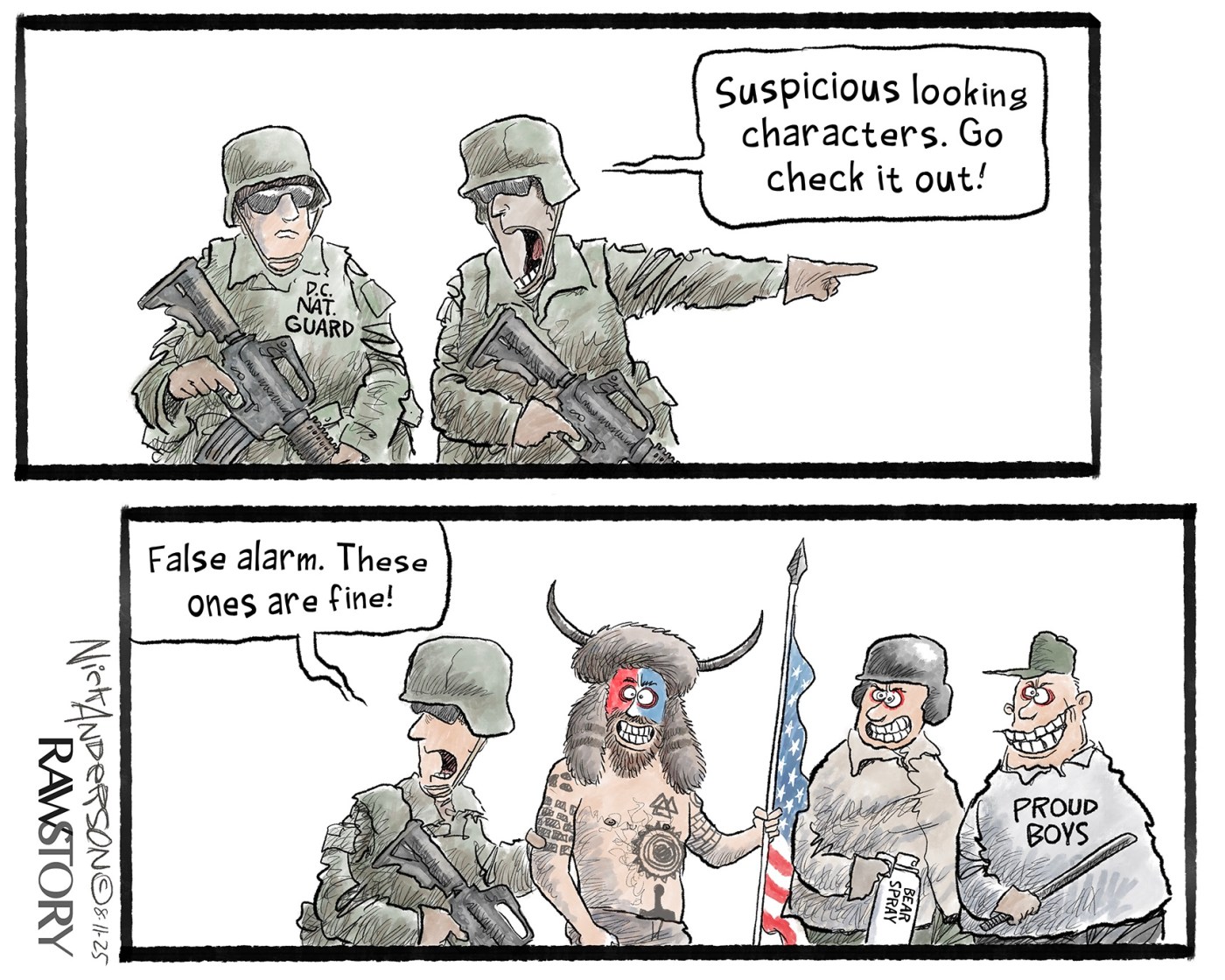Politics
Political Tensions Rise Over False Alarm Cartoon Published

A recent political cartoon published by cartoonist Nick Anderson on August 18, 2025, has sparked significant debate regarding editorial freedom and the responsibilities of artists. The cartoon, which has been interpreted as a satirical commentary on current political events, was met with both praise and backlash across various social media platforms.
Critics argue that the cartoon trivializes serious issues, while supporters defend it as a necessary form of expression. The image presents a caricature of political leaders amidst exaggerated circumstances, a common technique in political satire. This particular piece, however, has resonated with audiences in ways that have raised questions about the impact of humor on public discourse.
Public Reaction and Controversy
The reaction to Anderson’s cartoon has been polarized. Some viewers applauded the artist for his boldness, emphasizing the importance of satire in challenging authority. Social media users have shared the cartoon widely, with many commenting on its relevance to ongoing political debates. On the other hand, critics have expressed concern over what they see as a lack of sensitivity to the gravity of current events.
Editorial standards in political satire are often scrutinized, and this cartoon has reignited discussions about the boundaries of humor. Supporters argue that political cartoons serve as a vital form of critique that encourages public engagement and reflection. In contrast, detractors claim that such representations can desensitize audiences to real-world issues.
The debate highlights the delicate balance between freedom of expression and the potential consequences of misinterpretation. Some organizations have issued statements supporting Anderson’s right to express his views, while others have called for greater accountability among artists to consider the implications of their work.
Implications for Editorial Freedom
As political tensions continue to escalate globally, the role of satire in media becomes increasingly important. Anderson’s cartoon serves as a reminder of the power that images and words hold in shaping public opinion. The discourse surrounding this piece reflects broader societal challenges in navigating humor and sensitivity in political commentary.
In a world where information spreads rapidly, the impact of a single cartoon can be far-reaching. Artists like Anderson play a critical role in prompting discussions about pressing issues, even if their work may sometimes provoke controversy. As audiences engage with such content, the conversations that arise can lead to significant reflection on political narratives and societal values.
Ultimately, the response to Anderson’s work underscores the ongoing conversation about the responsibilities of artists and the importance of fostering a space for diverse perspectives. As discussions surrounding freedom of expression continue, the impact of political satire on public discourse remains a vital topic for consideration.
-

 Lifestyle3 months ago
Lifestyle3 months agoLibraries Challenge Rising E-Book Costs Amid Growing Demand
-

 Sports3 months ago
Sports3 months agoTyreek Hill Responds to Tua Tagovailoa’s Comments on Team Dynamics
-

 Sports3 months ago
Sports3 months agoLiverpool Secures Agreement to Sign Young Striker Will Wright
-

 Lifestyle3 months ago
Lifestyle3 months agoSave Your Split Tomatoes: Expert Tips for Gardeners
-

 Lifestyle3 months ago
Lifestyle3 months agoPrincess Beatrice’s Daughter Athena Joins Siblings at London Parade
-

 World3 months ago
World3 months agoWinter Storms Lash New South Wales with Snow, Flood Risks
-

 Science3 months ago
Science3 months agoTrump Administration Moves to Repeal Key Climate Regulation
-

 Science2 months ago
Science2 months agoSan Francisco Hosts Unique Contest to Identify “Performative Males”
-

 Business3 months ago
Business3 months agoSoFi Technologies Shares Slip 2% Following Insider Stock Sale
-

 Science3 months ago
Science3 months agoNew Tool Reveals Link Between Horse Coat Condition and Parasites
-

 Sports3 months ago
Sports3 months agoElon Musk Sculpture Travels From Utah to Yosemite National Park
-

 Science4 months ago
Science4 months agoNew Study Confirms Humans Transported Stonehenge Bluestones









